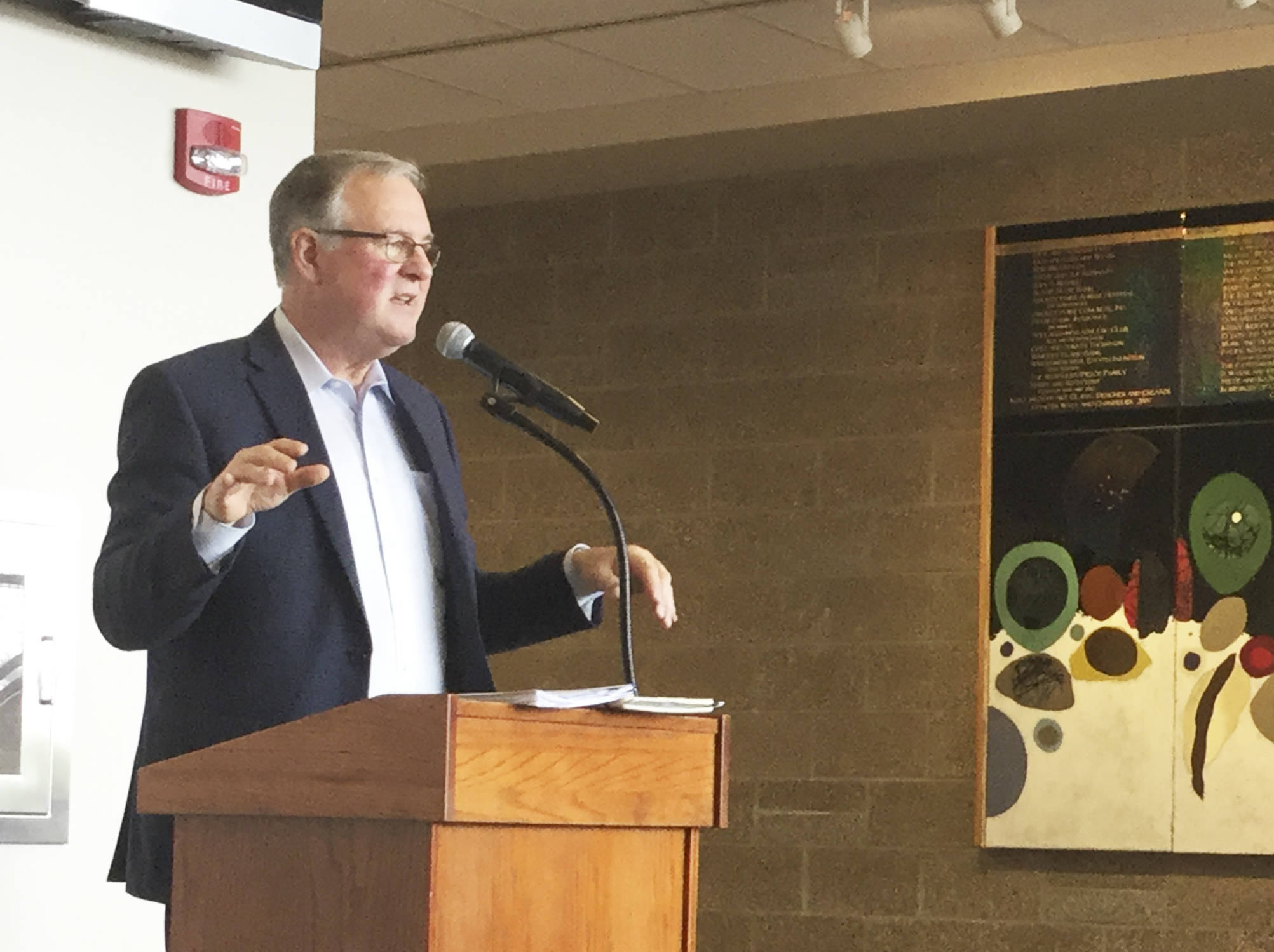ARLINGTON – While most people feel a connection to the Stillaguamish Valley, three quarters believe they could do a lot or little more to improve their well-being, and just under half are dissatisfied with local medical support according to a new health survey.
Those are among findings in the Stillaguamish Valley Community Health and Well-Being online survey conducted in spring by the Providence Institute for a Healthier Community, in partnership with the Cascade Valley Health Foundation and Stilly Valley Health Connections.
The main goals for the poll were to better understand and meet health needs, and to guide future funding priorities.
The survey also explored the extent to which “a community committed to well-being” might become an intentional component of the Stilly Valley regional’s identity.
“Well-being is everybody’s business,” said Scott Forslund, executive director of the Providence Institute, addressing a crowd at the Stilly Valley Chamber of Commerce luncheon Tuesday.
Forslund said the survey drew responses from 517 people in an area population of about 44,000 that included Arlington, Smokey Point, Oso and Darrington.
Foundation president Heather Logan said the groups wanted to create a “well-being North Star” for the Stillaguamish region. Logan, along with Ardis Schmiege, superintendent of Health Connections/Snohomish County Public Hospital District No. 3, were to promoting the survey.
The survey is a tailored version of one countywide that explored characteristics that may influence well-being here, including sense of connectedness to the Stilly Valley community, access to health resources and information, and local support for people with chronic conditions.
The results revealed a “community snapshot,” such as perceptions, satisfaction and behaviors – related to relationships and social connections; mental and emotional health; physical health; security and basic needs; and other areas.
Among the findings:
• 44% said they could be doing a little more to improve their well-being and 31% said they could do a lot more, while 1 in 4 said they can do nothing more.
• 46% do not feel personally connected to the Stilly Valley, while 19% feel highly connected. Two out of 3 adults under 35, people of color and single parents appear to feel the least connected.
• When measuring overall health and well-being, 10% said they were “flourishing,” 37% were moderate to good, 42% were challenged in their everyday living, and 10% were struggling, overall less positive than countywide results.
• 43% were dissatisfied with local medical support to help with their medical conditions.
• 18% were very satisfied with their physical health (vs. 28% countywide) and 43% were dissatisfied (vs. 35%).
• 73% are satisfied with their work or job, and 76% are satisfied with available learning and growth opportunities.
• Slightly more than the county are satisfied with a sense of purpose and meaning.
• 1 in 4 reported low emotional well-being.
• 81% are satisfied with their neighborhood – slightly better than the county – and 2 out of 3 talk with neighbors at least once a week.
Survey backers were encouraged that 2 out of 3 respondents – compared to half countywide – want to be engaged in initiatives and activities that grow out of next-step discussions.
That was good news to Forslund.
“It’s less important where you start on a journey to improve health and well-being; it’s more important that you start,” he said.
He added when trying to raise the standard of well-being, it’s important for a community to know where to find energy to connect with actions residents can get excited about.
“That’s where the work needs to happen,” he said.
Forslund said partnering agencies and individuals plan to meet on July 19 to start looking at possible funded actions going forward, whether that leads to more health prevention and screening campaigns, improving local support available for people with medical conditions such as heart disease, diabetes or obesity, or other ideas.
Mayor Barb Tolbert shared some background for how the survey came about.
She said while interacting with families who lost everything and social services agencies after the Oso slide, she saw Arlington and the valley from another perspective that required a more focused effort on helping the communities recover.
“When I met with the families at the shelter waiting for word about loved ones, I really saw a different picture of Arlington than I saw every day,” she said. “A lot of the families had started in a place low resilience in their life – whether it was poverty, job or housing issues. It made that step to recovery more difficult.”
A study by the city and United Way answered some questions about poverty’s impact on the health of the community and identified gaps in social services in north county. The Stilly Valley survey brought more data into the mix about how people feel toward their well-being, community, access to services and how various local governments, businesses and nonprofits can work together on the next steps to get them healthier.
“In the end, we want the most resilient community we can have, and we want a place where people can be healthy and thrive,” Tolbert said.
Editors note: The full report will be available online July 19 at http://www.stillyvalleyhealth.org.



